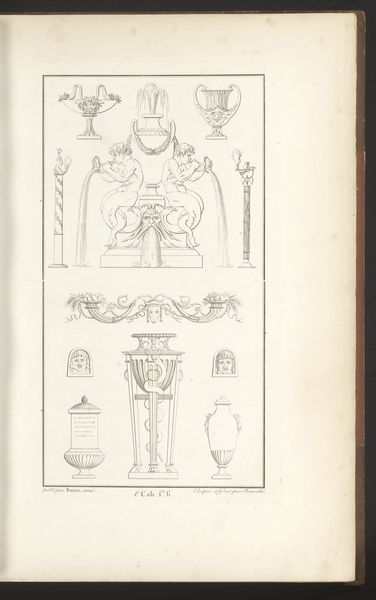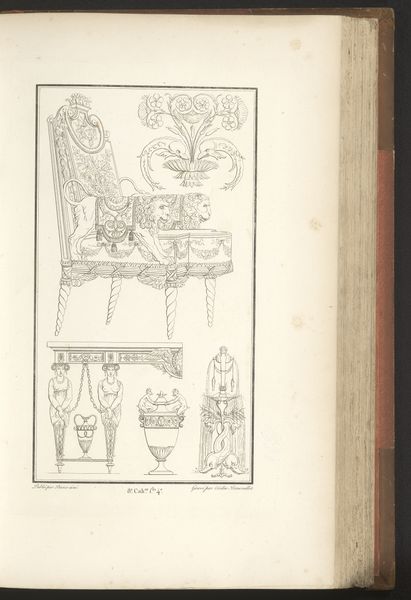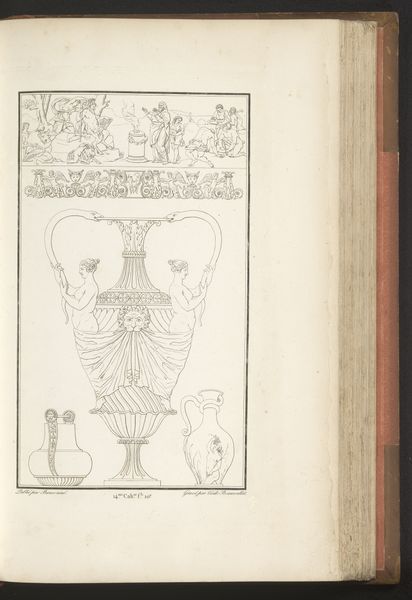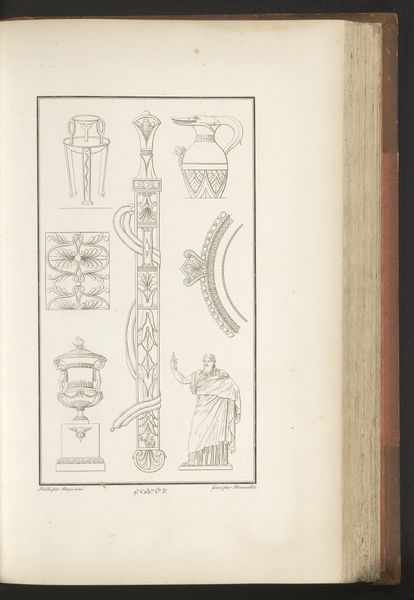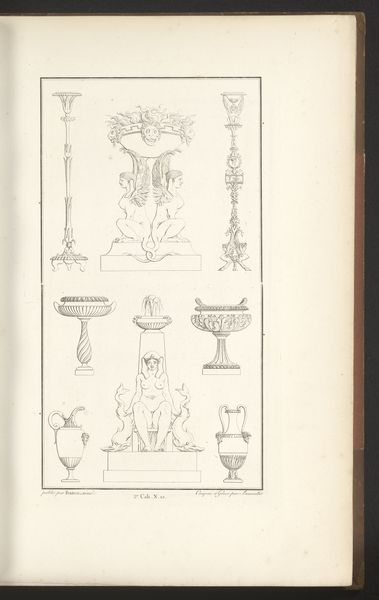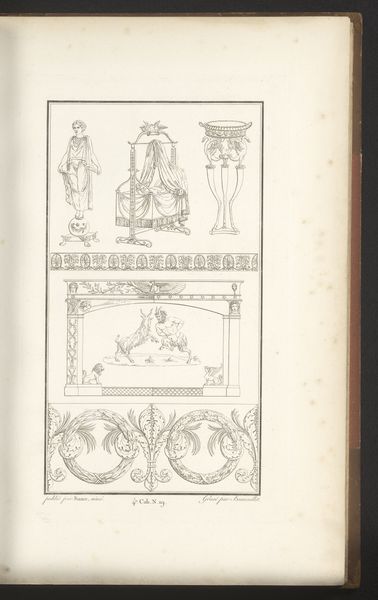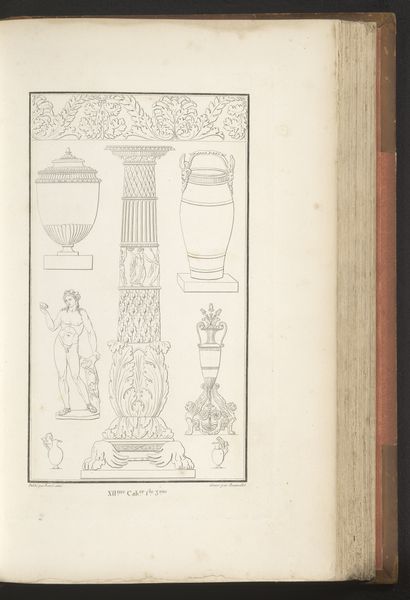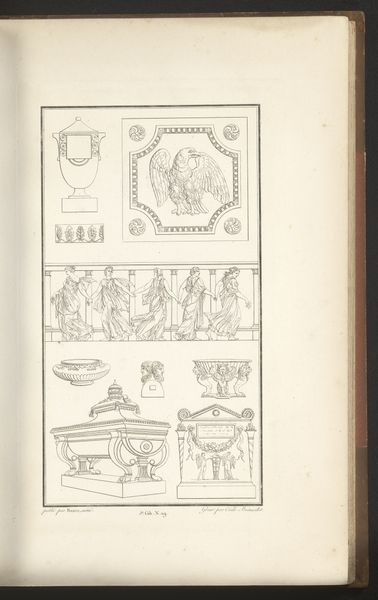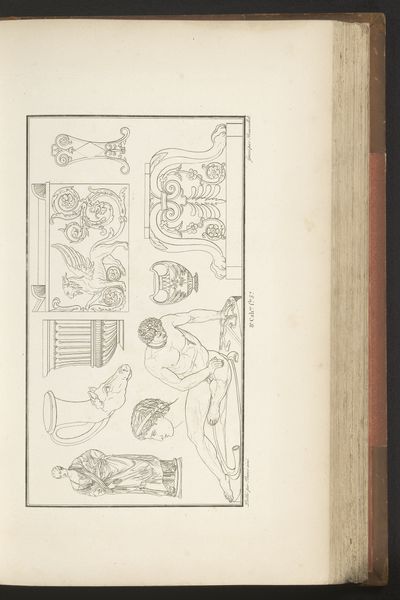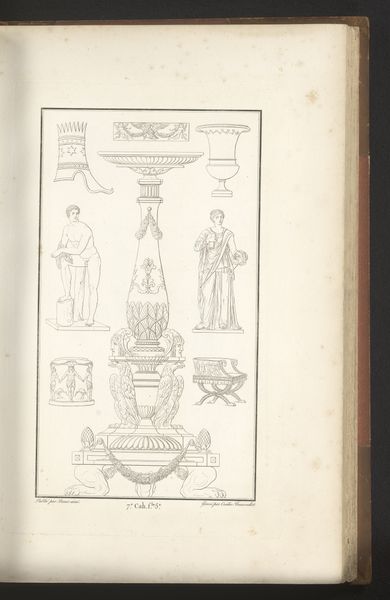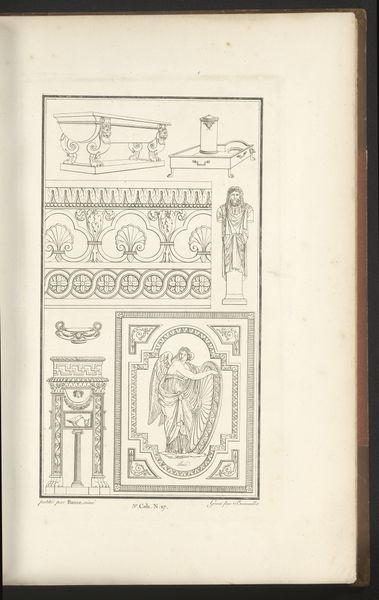
drawing, ink, engraving
#
drawing
#
neoclacissism
#
form
#
ink
#
geometric
#
decorative-art
#
engraving
Dimensions: height mm, width mm
Copyright: Rijks Museum: Open Domain
Curator: This is "Diverse Ornamenten," an engraving made around 1820 by Pierre-Nicolas Beauvallet. It depicts a series of neoclassical designs. Editor: My first impression is how pristine and ordered this feels. It's almost like an architect's catalogue, meticulously rendering each piece. Curator: Exactly. And these aren't just arbitrary forms; they are imbued with historical and cultural significance. Neoclassicism, you see, drew heavily from the aesthetics of ancient Greece and Rome, connecting artistic and political ideals with the rhetoric of republicanism and democracy. The furniture designs also highlight the gendered spheres within which they will come to occupy. Editor: I am particularly struck by the artist's engagement with his craft. The process itself is what creates these reproducible images—the engraving becomes a tool for democratization and production of design. Consider too, the labor invested to bring these designs to life as functional commodities in the homes of wealthy patrons. Curator: The sphinx, for instance, wasn’t merely decorative; it symbolized wisdom and guardianship, potent attributes in a patriarchal society as objects. And what about the wreaths; the symbolism for both triumph and mortality are rooted in ritual! The sphinx also speaks volumes about colonialism because their physical form speaks directly of objects collected. Editor: You know, I’m curious, looking at these idealized forms – do they highlight or obscure the exploitation required to access the materials necessary for production, like the quarries supplying marble, or workshops employing specialized, likely underpaid artisans? Curator: I see what you mean. Though rendered as pure form, each of these designs participated in—perhaps masked—existing social and labor inequalities. Each decorative choice encodes a gendered division in public life as much as social strata. It's important to remember how aesthetics were leveraged to support existing social structures. Editor: It brings to mind how even seemingly neutral design choices can reflect deeper political dynamics concerning social structures and available materials. Curator: By unraveling the visual language embedded in Beauvallet's piece, we start to grasp its profound engagement with history. Editor: Yes. Looking at these patterns really shows how the artwork functions not just as art, but also a signifier within broader economic and production chains.
Comments
No comments
Be the first to comment and join the conversation on the ultimate creative platform.
